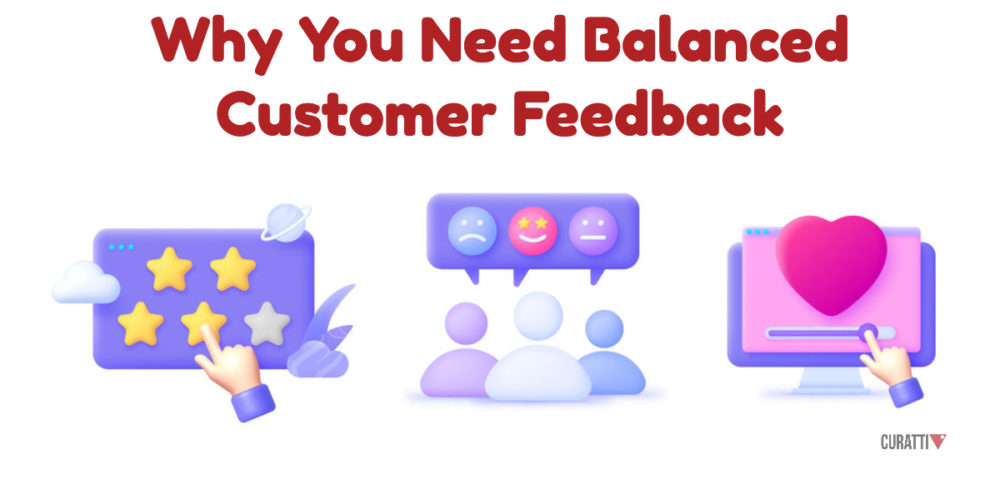Two Customer Feedback Types You Need To Balance

‘They’ve been so helpful that I’ll definitely come back again’ or ‘the staff was really unhelpful: never again!’ Whether they rant or rave after having had an experience with your business, customer feedback is mostly service-related. However, if you watch them just through that lens, you’ll get a partial view of the picture. Thus you may make decisions based on wrong assumptions. This article will help you prevent them.
Most Used KPIs
Most companies want to know about their customers’ experience. Some to get confirmation they’re doing a good job, the smartest ones to act upon feedback with a ‘continuous improvement approach. As you may guess, I encourage you towards the latter. That being said, the most frequent customer service KPIs ask the customer about the recent experience/conversations they’ve had:
1. Customer Satisfaction (CSAT)
CSAT measures satisfaction after a customer support interaction.
- 3-point scale from poor to very good
- 5-point scale from very difficult to very easy
2. Customer Effort Score (CES)
CES measures: customer’s ease to complete a specific task.
- 7-point scale from strongly disagree to strongly agree
- 5-point scale from very difficult to very easy
- 10-point scale from positive to negative
Note: you may have noticed that I did not quote the Net Promoter Score. I did it on purpose because I don’t consider it a proper metric when it comes to linking customer feedback related to support queries and interactions. If you want to know more about it, just drop me a line.
People or Process-Related Issues?

Image: Unsplash.com
Now, let’s get to the hottest part of this article. By asking such generic questions – via CSAT or CES surveys – when we get negative customer feedback, we tend to link them to a bad customer service staff issue. Accordingly, we come to quick conclusions: ‘The support team (or some of them) have made a mistake during the conversation’ or ‘they were not well trained’.
💡 The fact is that your customers may be dissatisfied with the experience, even though they appreciate the support staff’s willingness to help.
That’s why I suggest that you add a second question to your CSAT survey:
“How would you rate your conversations with our Support Team?”
This 2nd question allows you to get specific feedback about your staff. That is, you can distinguish negative feedback generated by a poor conversation (people issue) from those where it was just not possible immediately solve the problem (process-related issues).
Want some examples?
- Support agents are not empowered. They lack access to systems and data.
- A follow-up action is needed after the conversation to get an issue fixed…but only a different department may do it (e.g. Finance to check customer’s billing or payments).
- Customers request feedback, but support agents lack up-to-date information (e.g. in case of a web-service failure, the customer cannot access to information or complete a task).
🤚 Warning for HR managers: if the customer support team feels frustrated most of the time, they may decide to leave your organization.
Over to you
It’s in your interest to get customer feedback on a regular basis. To take a step further, I suggest that you laser focus on the root cause of negative feedback, detecting the areas where you can make improvements (up-skilling your support staff or adjusting current processes?). To do so, start reviewing and updating your post-conversational surveys. Today!
Have great conversations.
Sign Up For Our Mailing List And Our LinkedIn Group
If you want to join our Business After Twitter LinkedIn group, click here.
If you’d like to receive more in-depth articles, videos, and Infographics in your inbox, please sign up below.

Sign up for the newest articles from Curatti, delivered straight to your inbox
Featured image: Copyright: ‘https://www.123rf.com/profile_hasloo‘ / 123RF Stock Photo
Paolo Fabrizio
Latest posts by Paolo Fabrizio (see all)
- Get Your Digital Timing Aligned With Your Customers - August 8, 2023
- 3 Reasons To Keep Things Simple For Your Customers - July 5, 2023
- How Do You Fix An Issue With Your Customer? - June 5, 2023
